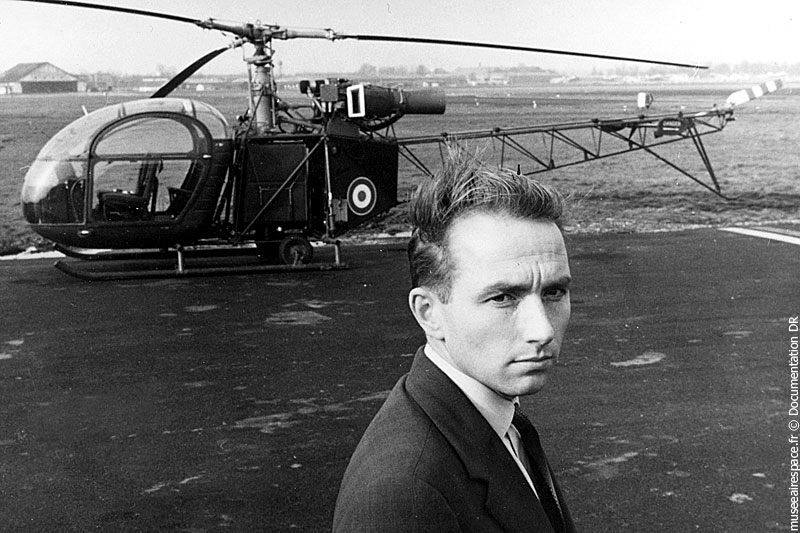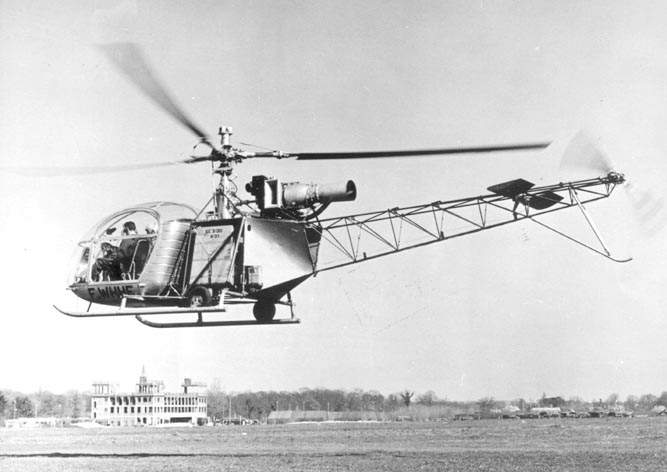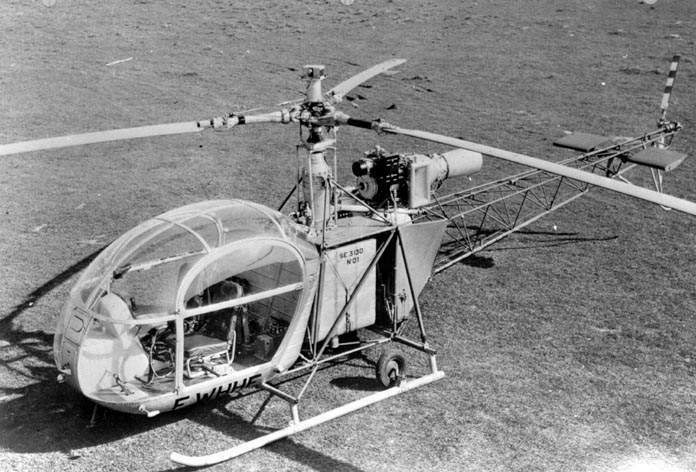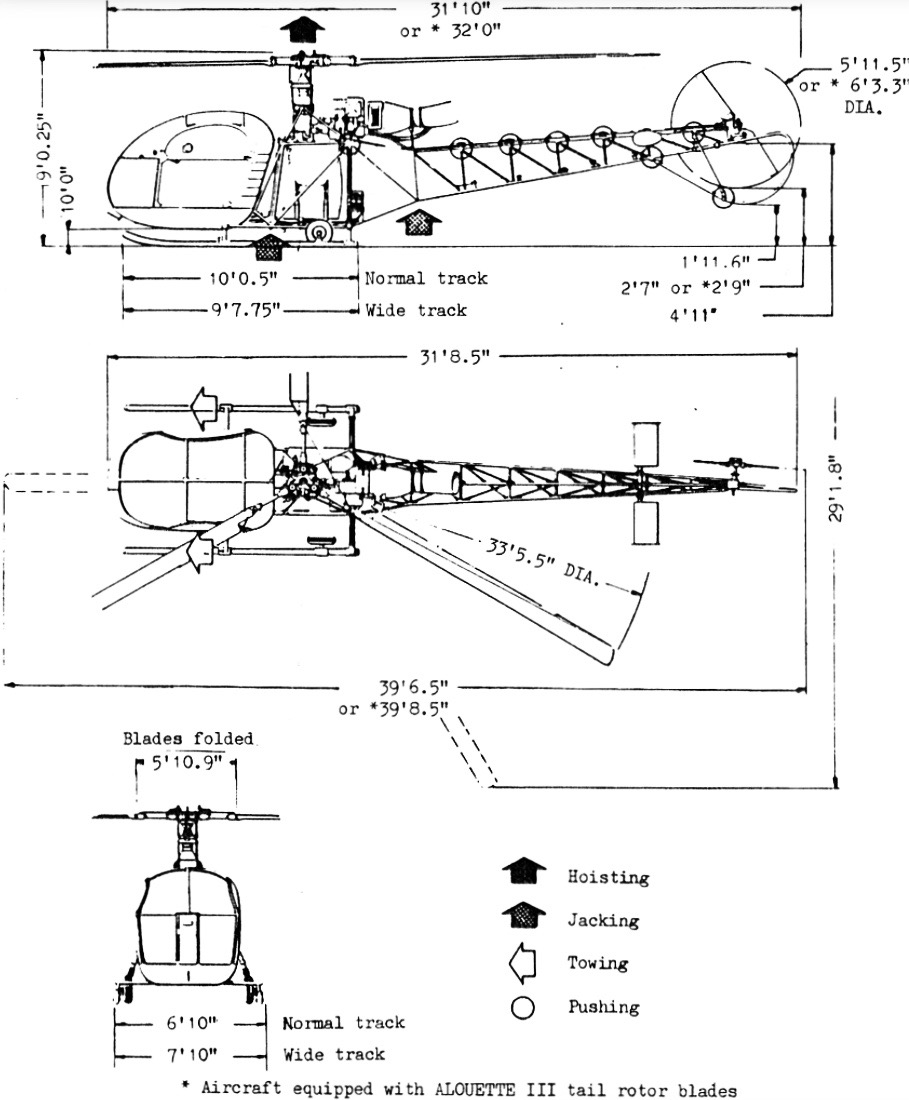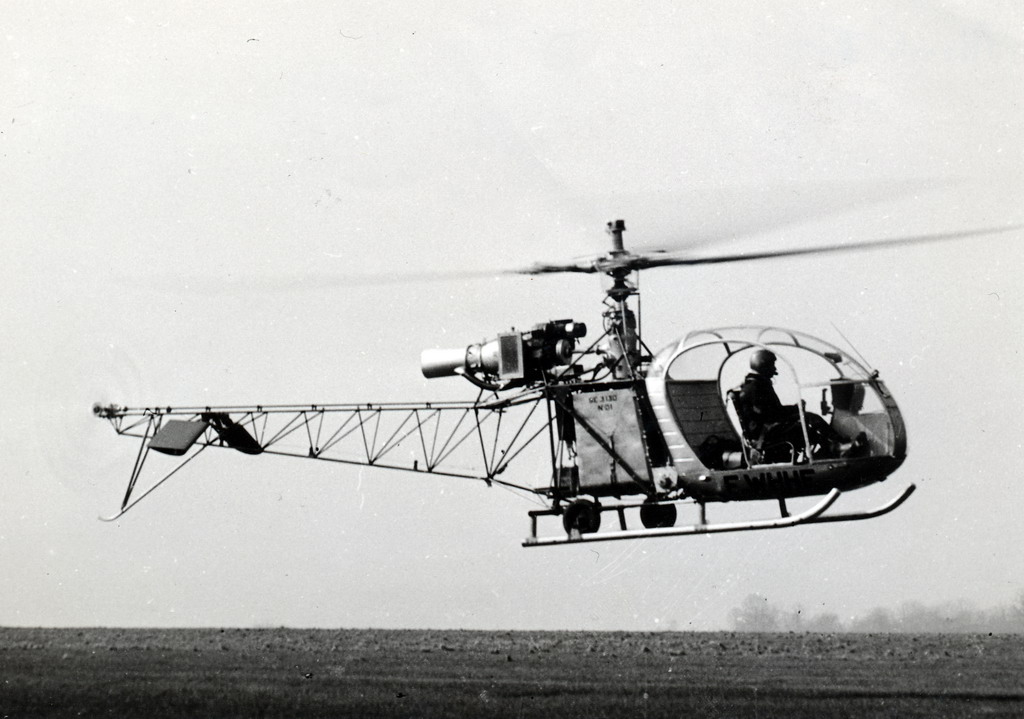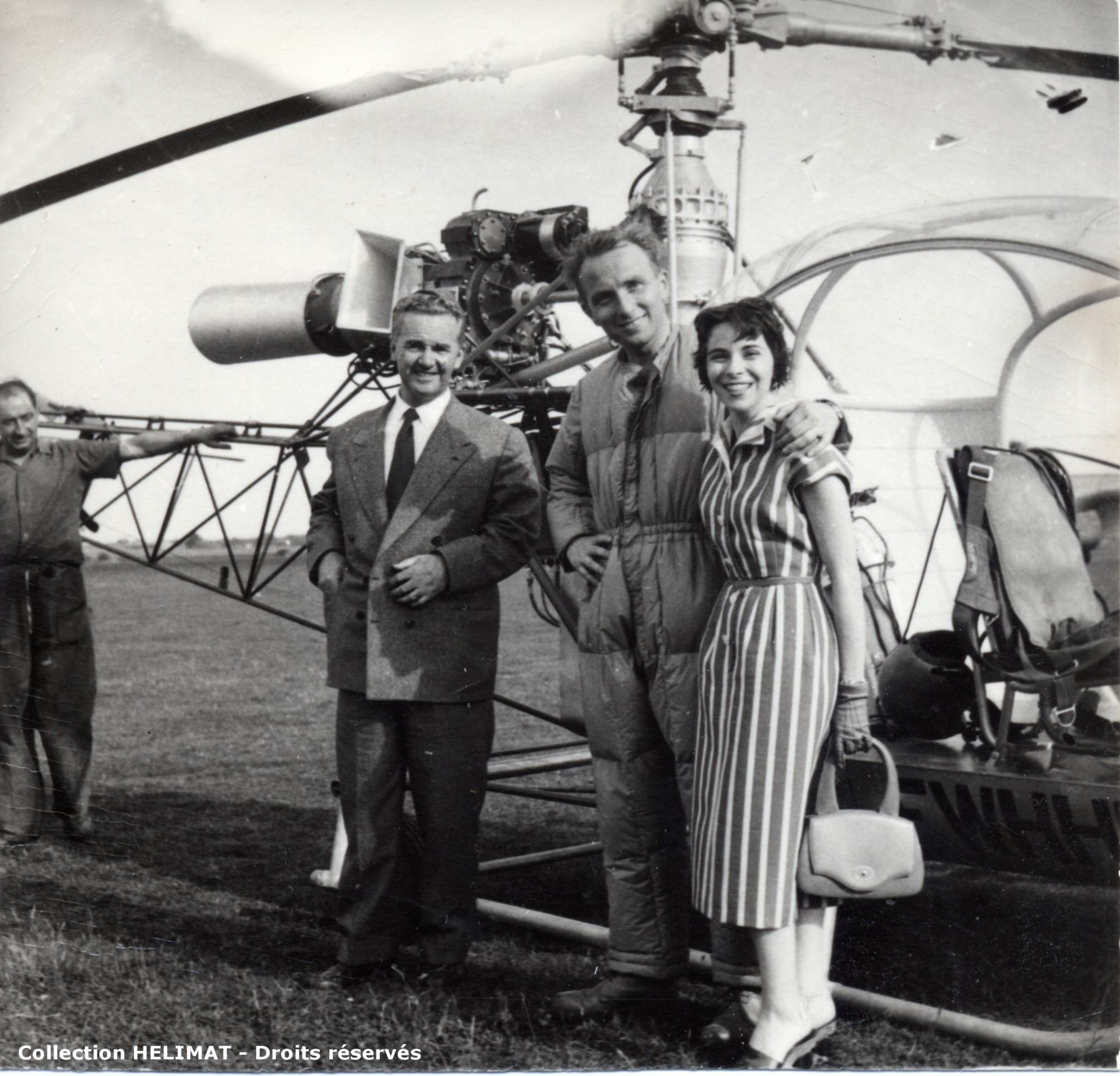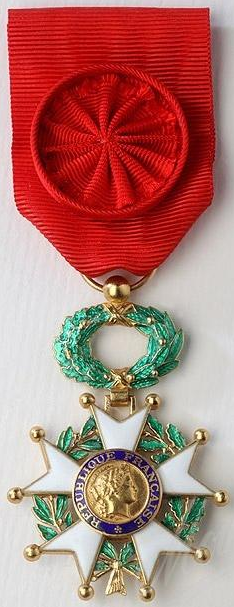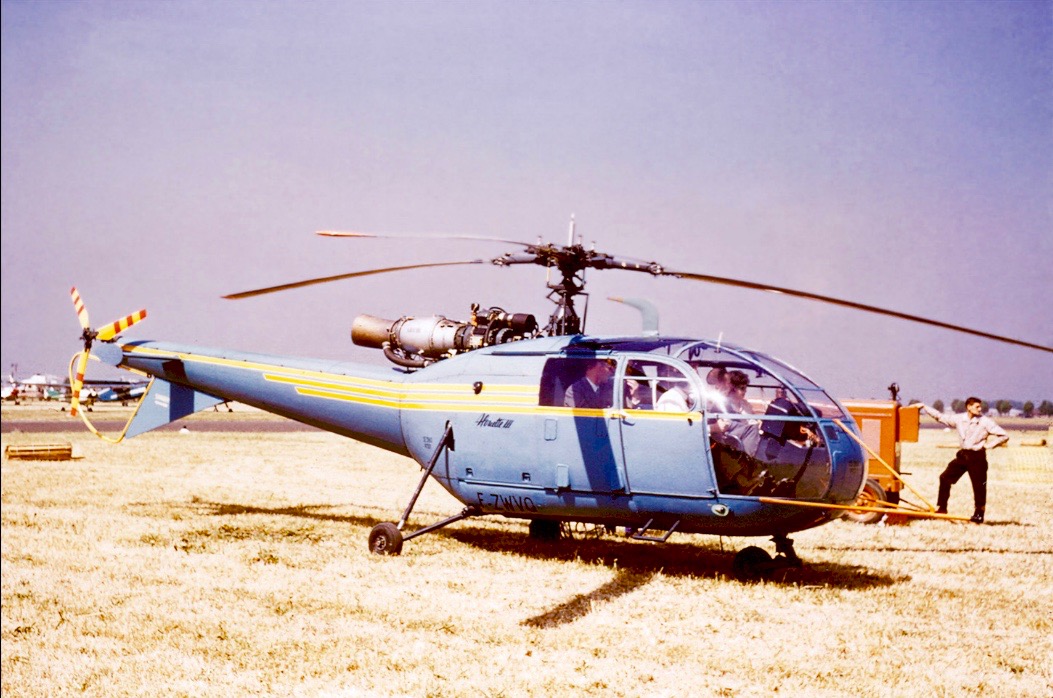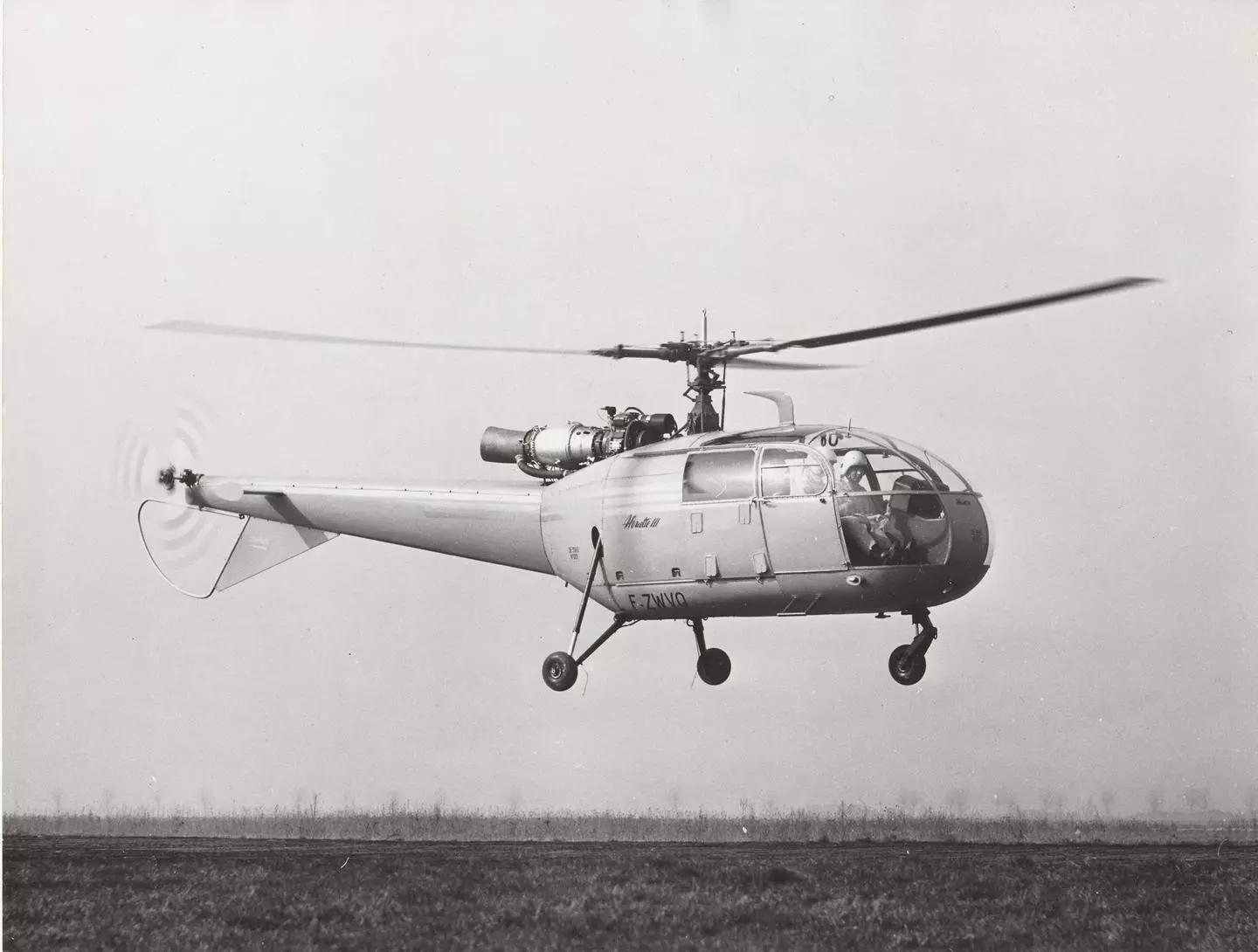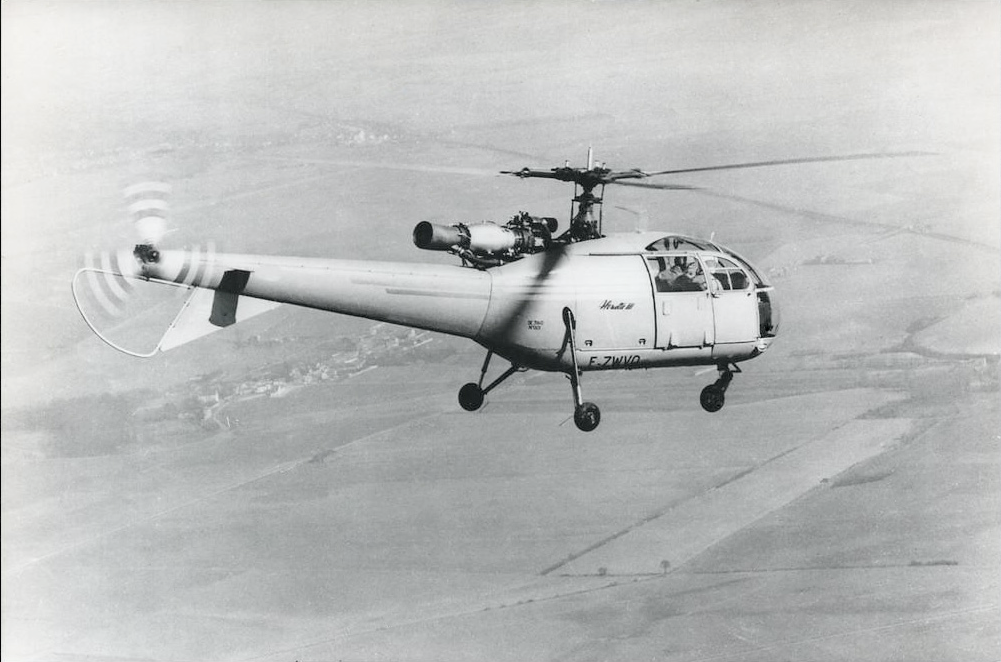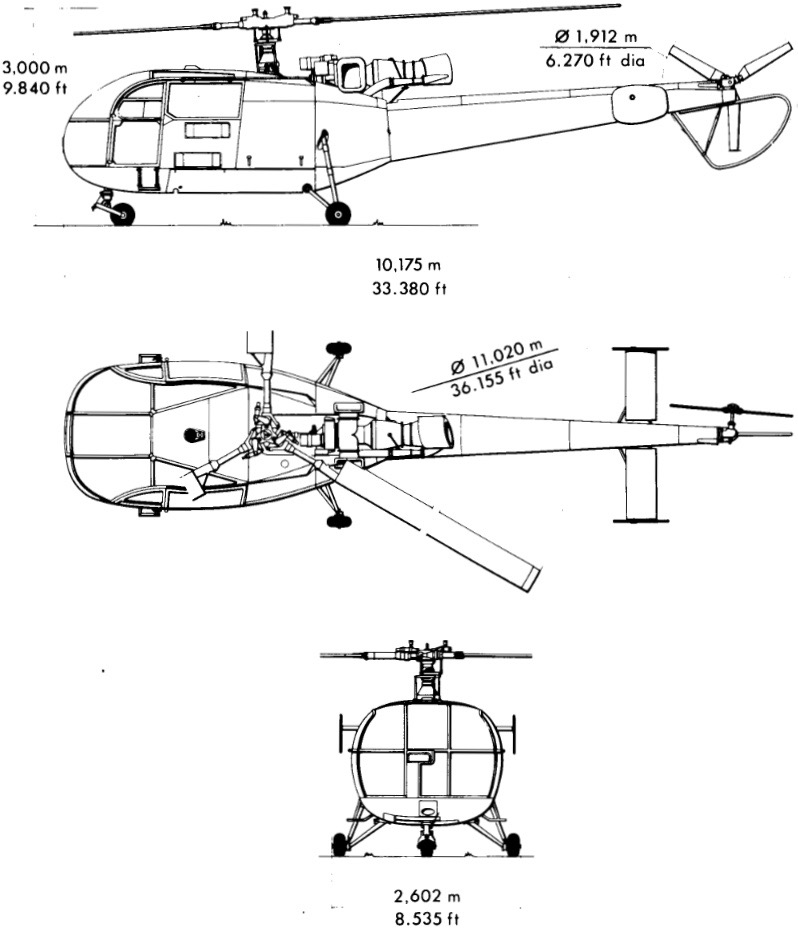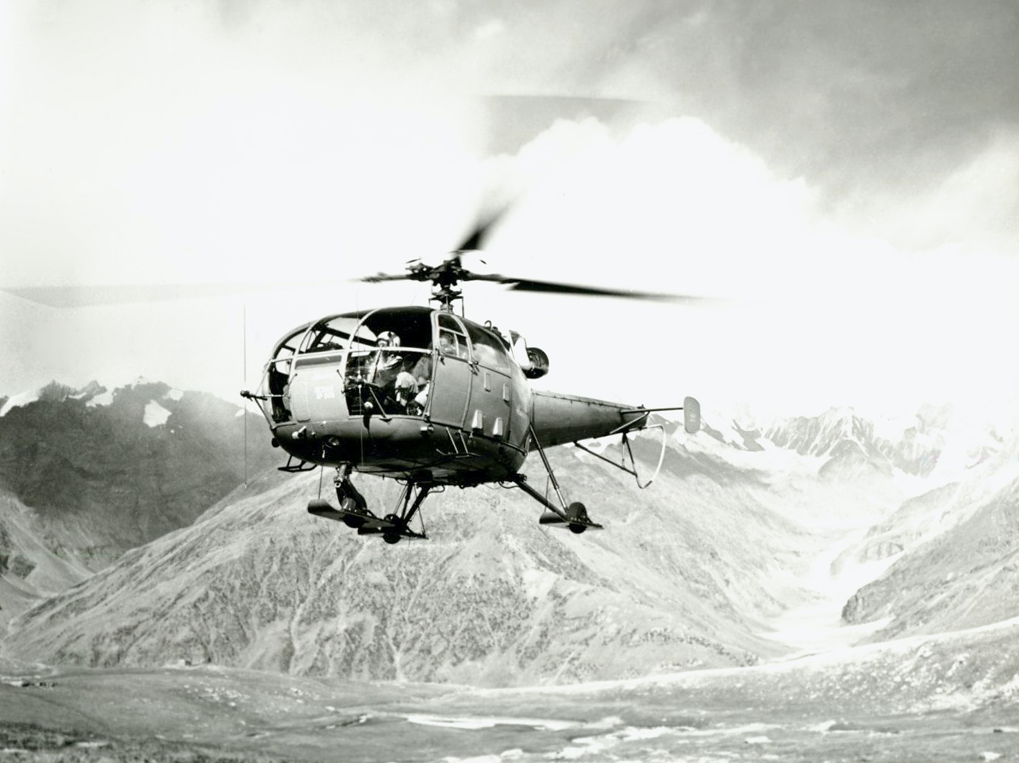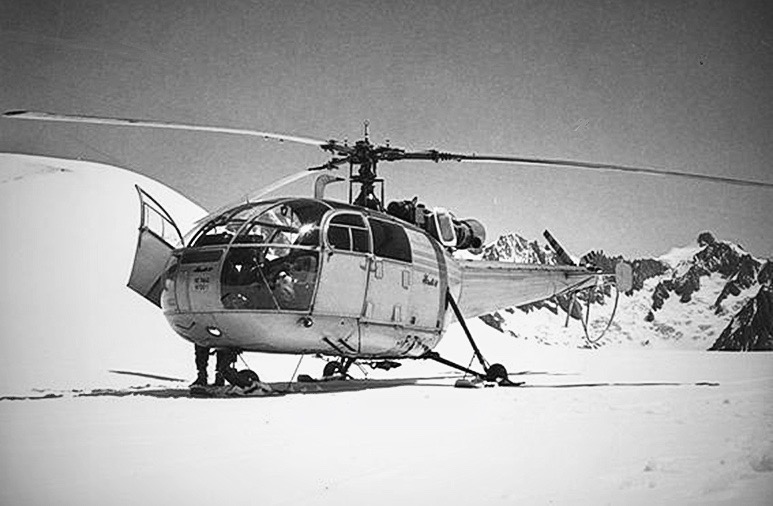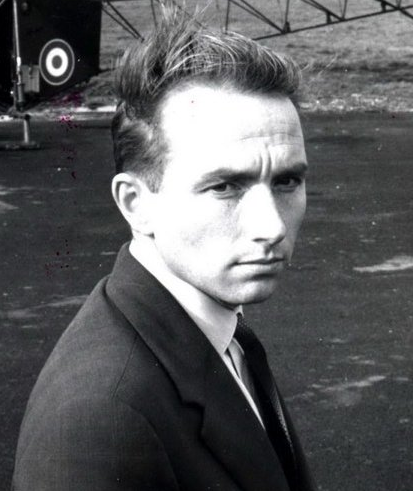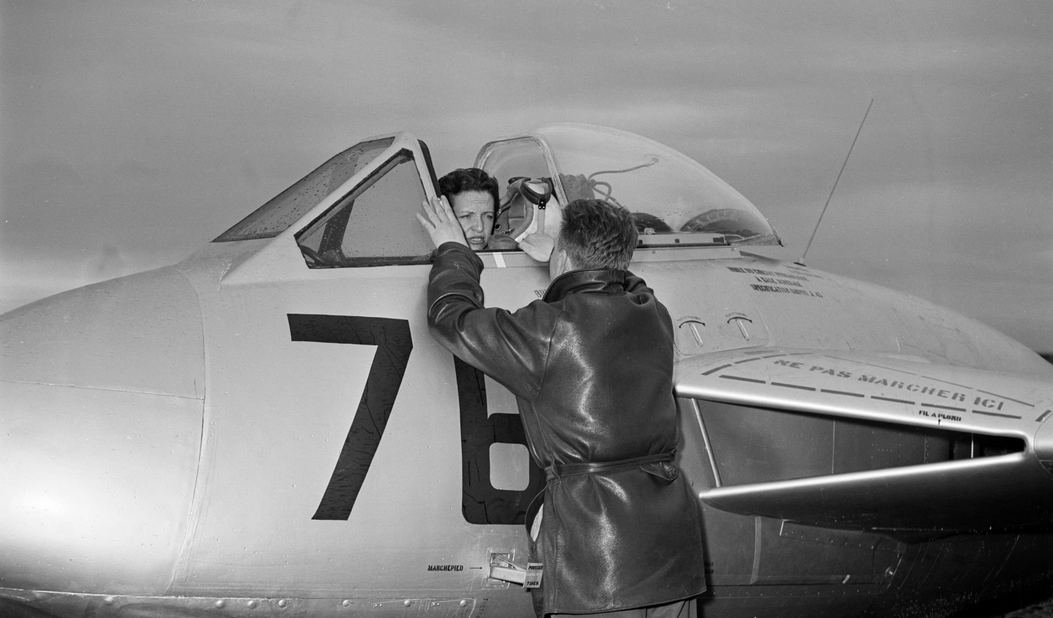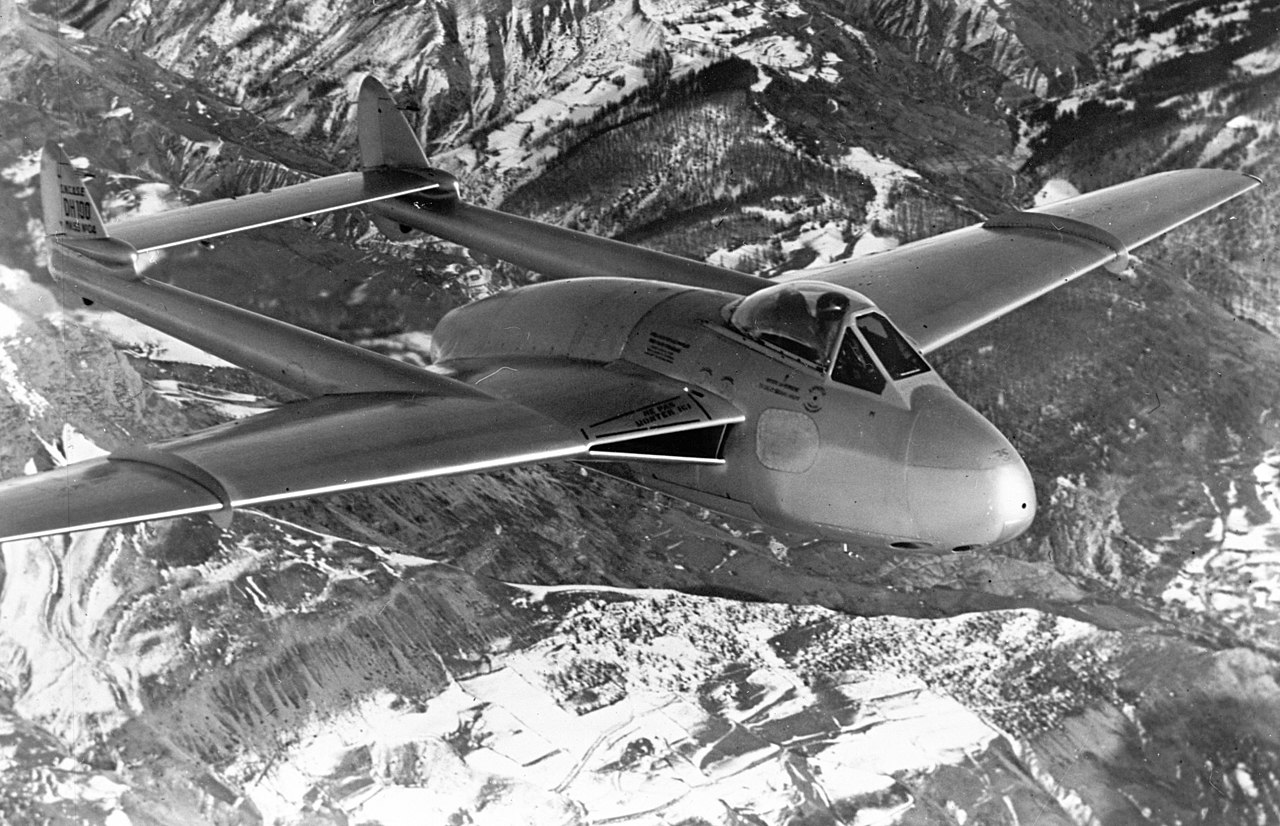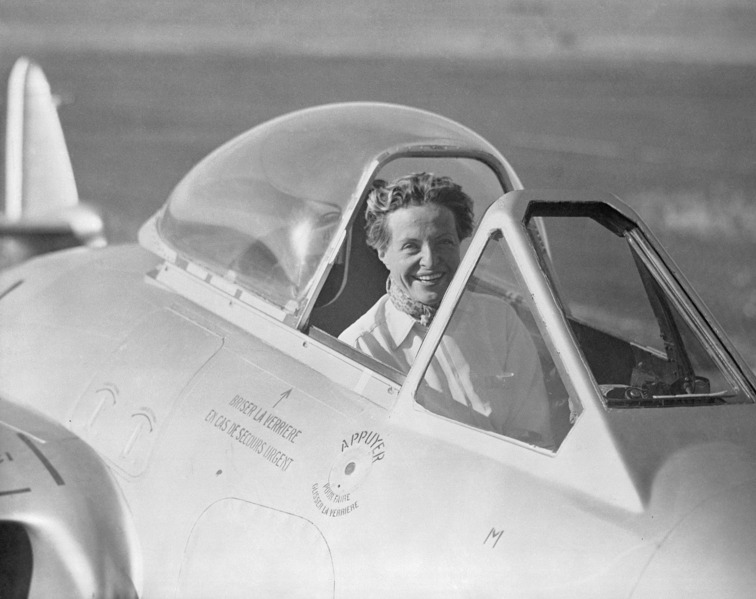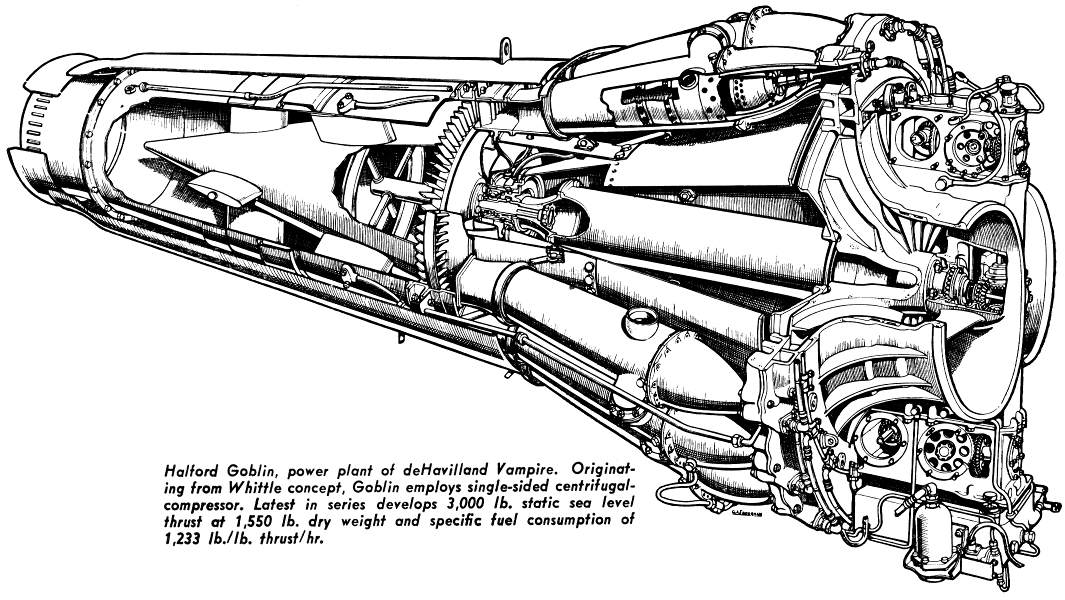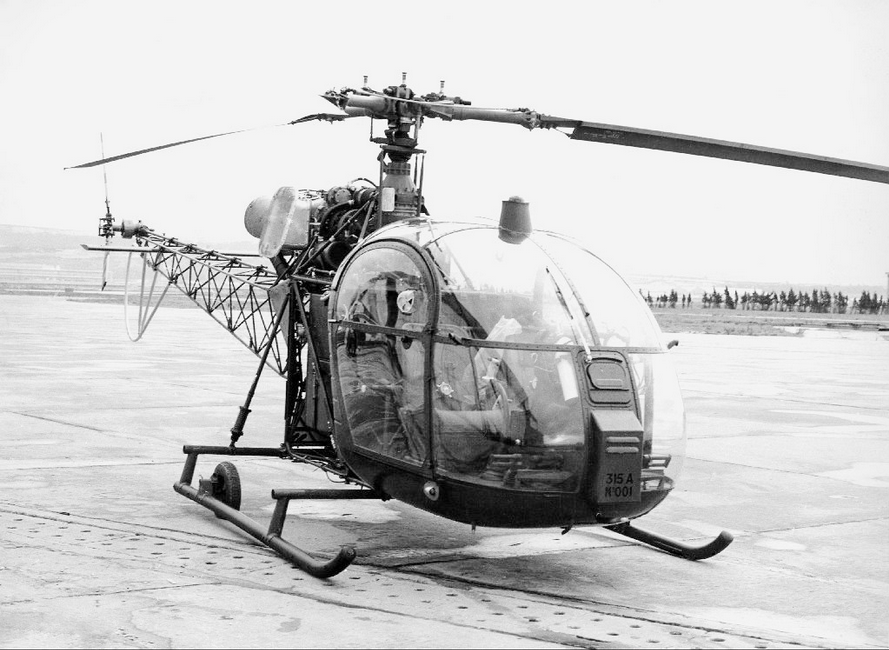
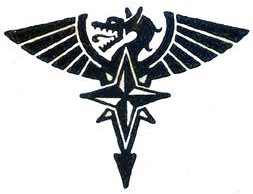 17 March 1969: First flight, Société nationale des constructions aéronautiques du Sud-Est test pilot Roland Coffignot and flight engineer Gérard Boutin made the first flight of the prototype SA 315A Lama, serial number 315-001. The new helicopter combined the airframe of the SNCASE Alouette II with the drive train and rotors of the Alouette III.
17 March 1969: First flight, Société nationale des constructions aéronautiques du Sud-Est test pilot Roland Coffignot and flight engineer Gérard Boutin made the first flight of the prototype SA 315A Lama, serial number 315-001. The new helicopter combined the airframe of the SNCASE Alouette II with the drive train and rotors of the Alouette III.
The helicopter was built to meet the specific needs of the Indian Air Force for operations in the Himalayan Mountains. It was required to take off and land at an altitude of 6,000 meters (19,685 feet) while carrying a pilot, one passenger and 200 kilograms (441 pounds) of cargo. The SA 315A was able to exceed this, landing and taking off in the Karakoram Mountains at 6,858 meters (22,500 feet).
315-001 was later upgraded to the SA 315 B configuration. It was registered F-BPXS. On 19 June 1972, Aérospatiale Chief Test Pilot Jean Boulet with Gérard Boutin set a Fédération Aéronautique Internationale (FAI) World Record for Altitude Without Payload at 10,836 meters (35,551 feet).¹ Three days later, 21 June, Boulet set another three World Records by flying 315-001 to an altitude of 12,442 meters (40,820 feet).²
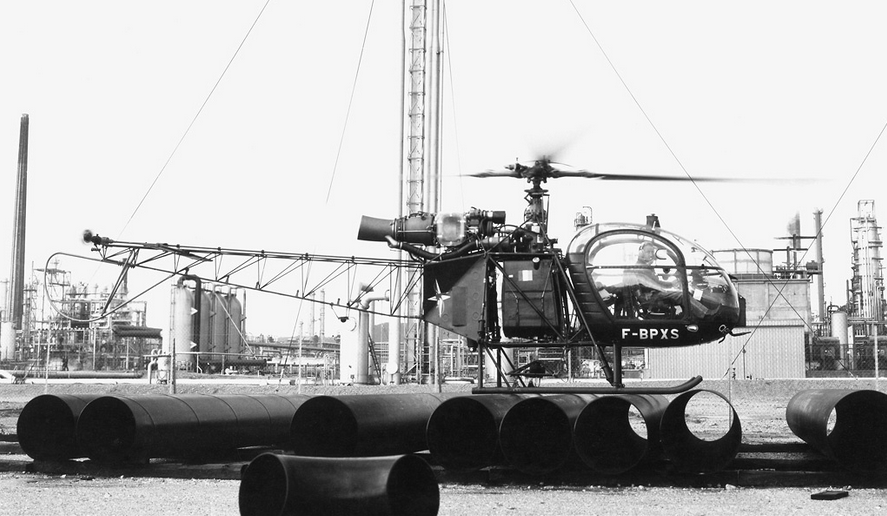
The SA 315 B Lama is a 5-place light helicopter powered by a turboshaft engine. It is operated by a single pilot. The fuselage is 10.236 meters (33 feet, 7.0 inches) long. With rotors turning, the helicopter has an overall length of 12.919 meters (42 feet, 4.6 inches) and height of 3.090 meters (10 feet, 1.7 inches). The SA 315 B has an empty weight of 1,021 kilograms (2,251 pounds) and a maximum gross weight of 1,950 kilograms (4,300 pounds). With an external load carried on its cargo hook, the allowable maximum gross weight is 2,300 kilograms (5,070 pounds).
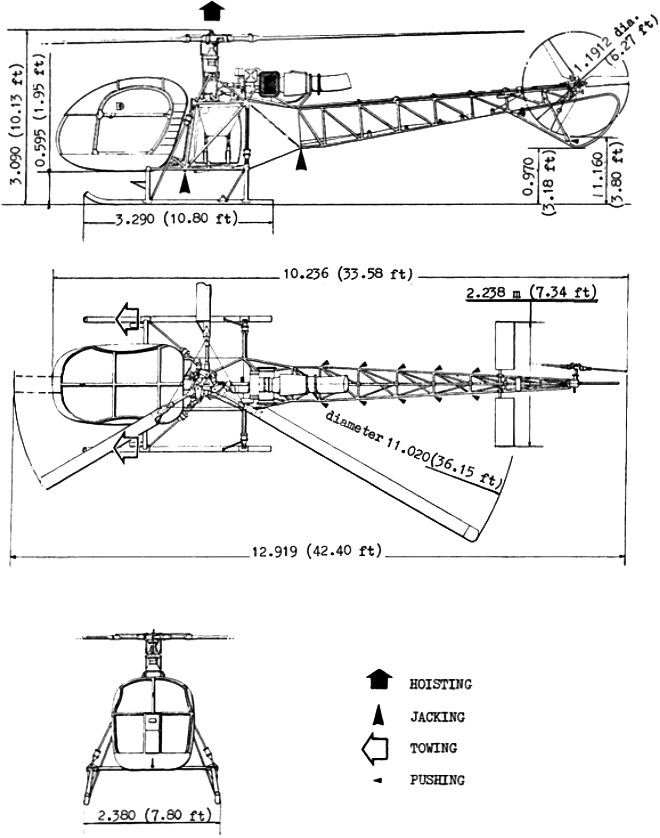
The three-bladed, fully-articulated main rotor has a diameter of 11.020 meters (36 feet, 1.9 inches). It turns clockwise, as seen from above. (The advancing blade is on the left side of the helicopter.) Normal main rotor speed, NR, is 350–360 r.p.m. The range in autorotation ins 270–420 r.p.m. The three-bladed anti-torque tail rotor is mounted on the left side of the tail boom in pusher configuration. It is 1.912 meters (6 feet, 3.3 inches) in diameter and turns clockwise, as seen from the helicopter’s left side. (The advancing blade is below the axis of rotation.) It turns at 2,020 r.p.m.
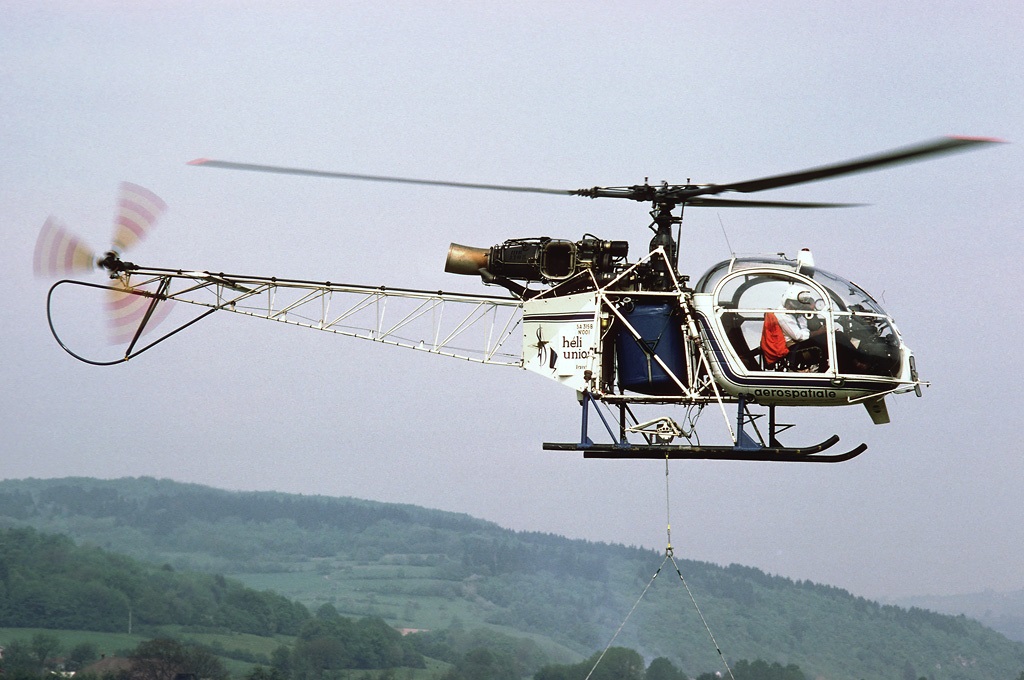
 The Lama was initially powered by a Societé Anonyme Turboméca Artouste III B (later aircraft, Artouste III B1) turboshaft engine. This is a single-shaft engine with a single-stage axial-flow, single-stage centrifugal flow, compressor section and a three-stage turbine. The engine turns 33,500 r.p.m. and the output drive shaft turns 5,773 r.p.m. The Artouste III B1 produces a maximum 870 horsepower, but is derated to 570 horsepower for installation in the Lama. The engine is 1.815 meters (5 feet, 11.5 inches) long, 0.667 meters (2 feet, 2.3 inches) high and 0.520 meters (1 foot, 8.5 inches) wide. It weighs 178 kilograms (392 pounds).
The Lama was initially powered by a Societé Anonyme Turboméca Artouste III B (later aircraft, Artouste III B1) turboshaft engine. This is a single-shaft engine with a single-stage axial-flow, single-stage centrifugal flow, compressor section and a three-stage turbine. The engine turns 33,500 r.p.m. and the output drive shaft turns 5,773 r.p.m. The Artouste III B1 produces a maximum 870 horsepower, but is derated to 570 horsepower for installation in the Lama. The engine is 1.815 meters (5 feet, 11.5 inches) long, 0.667 meters (2 feet, 2.3 inches) high and 0.520 meters (1 foot, 8.5 inches) wide. It weighs 178 kilograms (392 pounds).
The helicopter has a cruise speed 98 knots (113 miles per hour/181 kilometers per hour) and a maximum speed (VNE) of 113 knots (130 miles per hour/209 kilometers per hour) at Sea Level. Sideward or rearward flight (or operations in crosswinds or tailwinds) are restricted to 18 knots. The maximum operating altitude is 7,000 meters (22,966 feet). At 1,950 kilograms (4,299 pounds), the Lama has a hover ceiling in ground effect (HIGE) of 5,050 meters (16,568 feet), and out of ground effect (HOGE), 4,600 meters (15,092 feet).
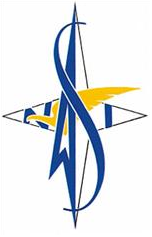 Société nationale des constructions aéronautiques du Sud-Est became Societe nationale industrielle aérospatiale (SNIAS) in 1970. The company produced the SA 315 B Lama beginning in 1971. It was also built under license by Hindustan Aeronautics in India and Helibras in Brazil.
Société nationale des constructions aéronautiques du Sud-Est became Societe nationale industrielle aérospatiale (SNIAS) in 1970. The company produced the SA 315 B Lama beginning in 1971. It was also built under license by Hindustan Aeronautics in India and Helibras in Brazil.
The total number of SA 315 Bs and its variants built is uncertain. In 2010, Eurocopter, the successor to Aérospatiale, announced that it will withdraw the Lama’s Type Certificate in 2020.
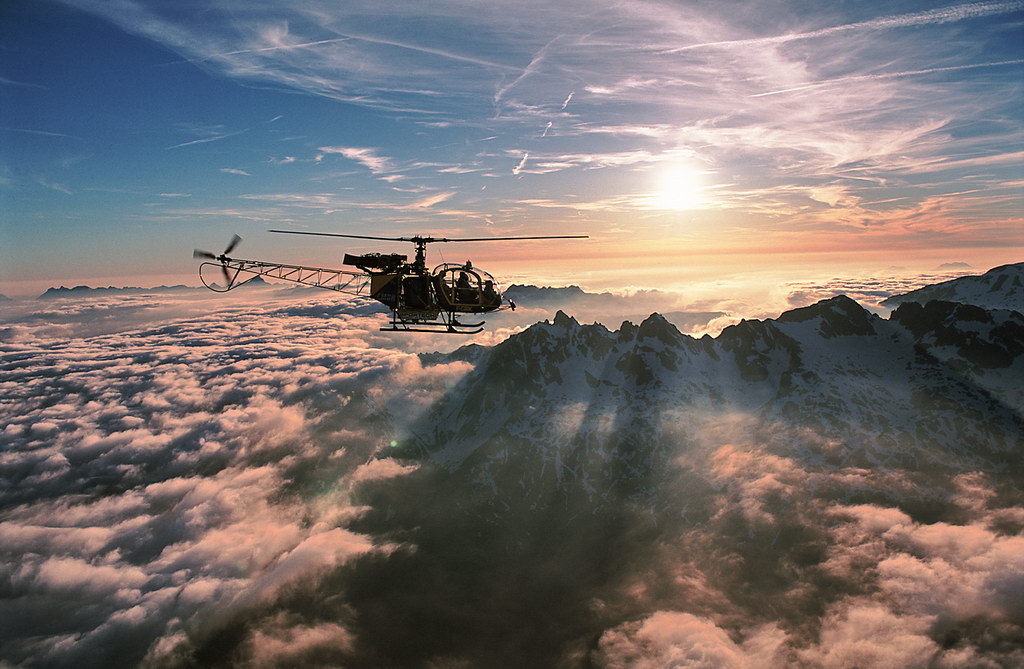
¹ FAI Record File Number 788.
² FAI Record File Numbers 753, 754 and 11657.
© 2019 Bryan R. Swopes
